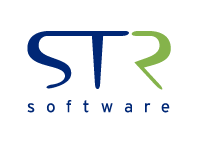The Challenge of Email Uncertainty in Oracle ERP
In the fast-paced business world, reliable communication is the lifeblood of efficient operations. For organizations leveraging the power of Oracle EBS (E-Business Suite) and Oracle Cloud Fusion, the seamless delivery of critical business documents—be they invoices, purchase orders, or other essential communications with partners—is paramount. However, the standard email functionality within these robust ERP systems often leaves a critical gap: the uncertainty of whether your message truly arrived and was engaged with. This lack of visibility can lead to duplicated efforts, delayed processes, and a general sense of unease.
Imagine sending out month-end financial reports from Oracle EBS or critical workflow approvals from Oracle Cloud, only to wonder if they reached the intended recipients. Did they land in their inbox, get caught in a spam filter, or encounter a delivery error? Without concrete answers, valuable time is wasted on follow-ups and troubleshooting.
Navigating the Complexities of Oracle Emailing
While Oracle EBS and Oracle Cloud offer robust functionalities, their native output options for document delivery, including email, can present several challenges that hinder efficient communication and operational visibility. Oracle Cloud’s standard output options may have limitations such as:
- Limited control over print (i.e, email, print, and no print) destinations and configurations.
- Difficulty in automating complex distribution workflows.
- Email subject and body are often static and based on the Business Unit.
- Limited distribution options, potentially leading to increased manual intervention and delays.
It’s also a common misconception that if Oracle reports an email as “Complete,” “Success,” or “Sent,” it automatically means the email was successfully delivered to the recipient’s inbox (Schrödinger’s Email). This assumption can lead to false confidence and a lack of proactive follow-up on critical communications.
Another challenge is Microsoft’s forthcoming limitations on outbound sending and complex OCI email requirements (and limitations).
Enter AventX Email Tracker, a solution designed to bridge this visibility gap. It empowers Oracle EBS and Oracle Cloud users with the ability to gain deep insights into the delivery status of their emails, providing enhanced control over critical communications and ultimately boosting internal productivity and streamlining workflows.
AventX Email Tracker: Clarity in Every Sent Email
AventX Email Tracker significantly leaps forward in email delivery management for your Oracle ERP environment. It moves beyond the basic “sent” status, offering comprehensive tracking that provides a clear picture of your email’s journey. With AventX, you gain access to crucial information at each stage of the delivery process, including:
- Confirmation of receipt by the email server: Know that your email successfully reached its initial destination.
- Inbox placement: Understand if your email landed directly in the recipient’s inbox, avoiding potential delays or missed communications due to spam filters.
- Open tracking: See if and when the recipient opened your email, providing insight into engagement.
- Click tracking: For emails containing links, track which links were clicked and when, offering valuable data on recipient interaction with shared information.
- Bounce and non-delivery notifications: Receive immediate alerts if an email fails to be delivered, allowing for swift corrective action.
This detailed tracking eliminates the guesswork associated with standard email, providing tangible evidence of communication delivery and engagement.
The Power of Oracle Data Integration: Context is King
A key strength of AventX Email Tracker lies in its deep and seamless integration with your existing Oracle data, transforming raw email delivery information into actionable business intelligence. By leveraging crucial identifiers such as the Oracle EBS Request ID or the Oracle Cloud ESS Process ID, AventX enriches the email tracking data with invaluable context, directly linking email activity to specific email recipients, documents, and processes within your ERP.
Consider the implications of this integration for managing invoices. When a batch of customer invoices is generated and distributed via email from Oracle EBS, AventX doesn’t just tell you if the emails were sent. It ties the delivery status of each invoice directly back to the unique Request ID of the invoice generation process. This means if a customer claims they haven’t received their invoice, your accounts receivable team can instantly pinpoint the exact instance of the invoice generation within EBS and check the corresponding email delivery status in AventX, all using the same identifier. They can see if the email was delivered, opened, or if a bounce occurred, allowing for immediate troubleshooting and resending if necessary—potentially even before a customer follows up. This proactive approach can significantly improve your Days Sales Outstanding (DSO) and enhance customer satisfaction.
Similarly, when purchase orders are dispatched to vendors from Oracle Cloud Fusion, AventX tracks their journey and associates each PO delivery with the specific ESS Process ID of that PO creation instance. If a vendor claims they haven’t received the PO, your procurement team can quickly ascertain whether the notification was successfully delivered and opened, directly referencing the relevant ESS Process ID. They can identify delivery failures, investigate potential issues with the email system, and resend the PO promptly, preventing delays in your supply chain and ensuring timely fulfillment of orders.
Furthermore, this integrated data can be leveraged for more insightful internal reporting and analysis. Imagine being able to track the delivery success rates of specific Oracle modules or business processes. By monitoring AventX data, you can identify areas where communication breakdowns might be occurring, allowing for targeted improvements to your system configurations or communication protocols. This ability to contextualize email delivery within the broader Oracle landscape provides a level of visibility and control that standard email functionality simply cannot offer. The inherent link between the email activity and the originating Oracle process transforms email tracking from a reactive troubleshooting tool into a proactive instrument for optimizing workflows and ensuring the reliable flow of information across your organization.
Why AventX Email Tracker is Essential for Oracle Users
Implementing AventX Email Tracker offers significant advantages for organizations relying on Oracle EBS and Oracle Cloud for their core operations:
- Deeper Insights into External Communications: Gain unprecedented visibility into the delivery and engagement of your critical emails containing invoices and purchase orders, directly linked to your Oracle processes.
- Enhanced Control over Customer & Vendor Interactions: Proactively manage email delivery, troubleshoot issues efficiently within the context of your Oracle environment, and ensure important documents reach your external partners reliably.
- Improved Productivity in External Processes: Eliminate the uncertainty of email delivery, reduce time spent on follow-ups with customers and vendors, and streamline external communication workflows related to invoicing and procurement.
Leverage Existing Oracle Data for External Communication Management: Contextualize email delivery within your familiar Oracle environment using Request and ESS Process IDs for seamless tracking and analysis of communications with customers and vendors.
Ready to unlock deeper email insights and gain enhanced control over your Oracle ERP communications? Discover how AventX Email Tracker can transform your workflows and boost productivity.



![Rollup of Product Updates [Winter 2025; v25.1]](https://www.strsoftware.com/wp-content/uploads/2023/02/Feature_Image_ProductUpdate_Wave-510x382.png)
